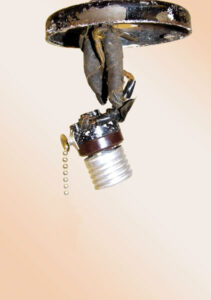 Each year, household wiring and lighting cause an estimated average of 32,000 home fires. On average, these fires result in 950 injuries, 220 deaths and nearly $674 million in property damage, according to the National Fire Protection Association.
Each year, household wiring and lighting cause an estimated average of 32,000 home fires. On average, these fires result in 950 injuries, 220 deaths and nearly $674 million in property damage, according to the National Fire Protection Association.
If you have an older home, you may have tried to plug in an electronic device or appliance, only to find you have a plug with three prongs and an outlet with just two holes. This probably means the outlet, and possibly the entire home’s electrical system, is not grounded. Having ungrounded outlets or an electrical system that is not properly grounded can be dangerous and not up to local code.
Electricity naturally flows to the earth, or ground, and will do so through anything that will conduct current. That third prong on the plug is there to provide a path for the electricity to travel to ground if there is a fault in the electrical device. This often trips a breaker or blows a fuse and cuts off the electricity to that circuit, saving the appliance or electronic device—and you—from damage.
As Executive Director of the Energy Education Council and its Safe Electricity program, I want you to know that ungrounded electrical systems provide little or no protection from faults which could lead to damaged electrical equipment or injuries. Don’t forget that even household current can kill.
According to the Occupational Safety and Health Administration (OSHA) there are two kinds of grounding: 1) Electrical circuit or system grounding, which is accomplished when one conductor of the circuit is connected to earth to protect the circuit, and 2) Electrical equipment grounding or equipment grounding. This is accomplished when all metal frames of equipment and enclosures containing electrical equipment or conductors are grounded by means of a permanent and continuous connection or bond. This provides a path for dangerous fault current to return to the system ground should an insulation failure take place.
If you believe the outlets in your home are not properly grounded, one sure fix to the problem is to rewire the entire home. Other fixes, like installing Ground Fault Circuit Interrupters (GFCIs) may allow the outlet to work, and actually be up to code, but do not supply the safety testing feature of a grounded outlet. In addition, the next homeowner may think the outlet is grounded, when in fact it is not. Your best bet is to discuss all of your options with the help of a professional electrician. In the meantime, here are some safety tips to keep in mind:
• Never remove the third grounding prong on an appliance plug. The plug is there to conduct voltage to ground in the event of a short circuit in the electrical device.
• Adapter plugs should only be used on a temporary basis. When using these devices, make sure the small metal circle on the bottom contacts the screw in the middle of the outlet.
• Do not try to install a grounded outlet in an ungrounded receptacle.
• If you have invested in costly, sensitive electronics (i.e., a computer, a high-definition TV), keep in mind that power surges carry a greater risk with older, ungrounded wiring. To protect your equipment, talk to a professional electrician about wiring upgrades and surge protection.

The National Electric Code states, “Grounding is to ensure that the electrical system is safe against electric shock and fires by limiting the voltage (from) lightning, line surges, or unintentional contact with higher-voltage lines and….ground-fault.”
The safety of you, your family, and your expensive appliances and electronics could be at risk if your home is not properly grounded.
Make sure your home is safe. For more electrical safety information, go to SafeElectricity.org.









